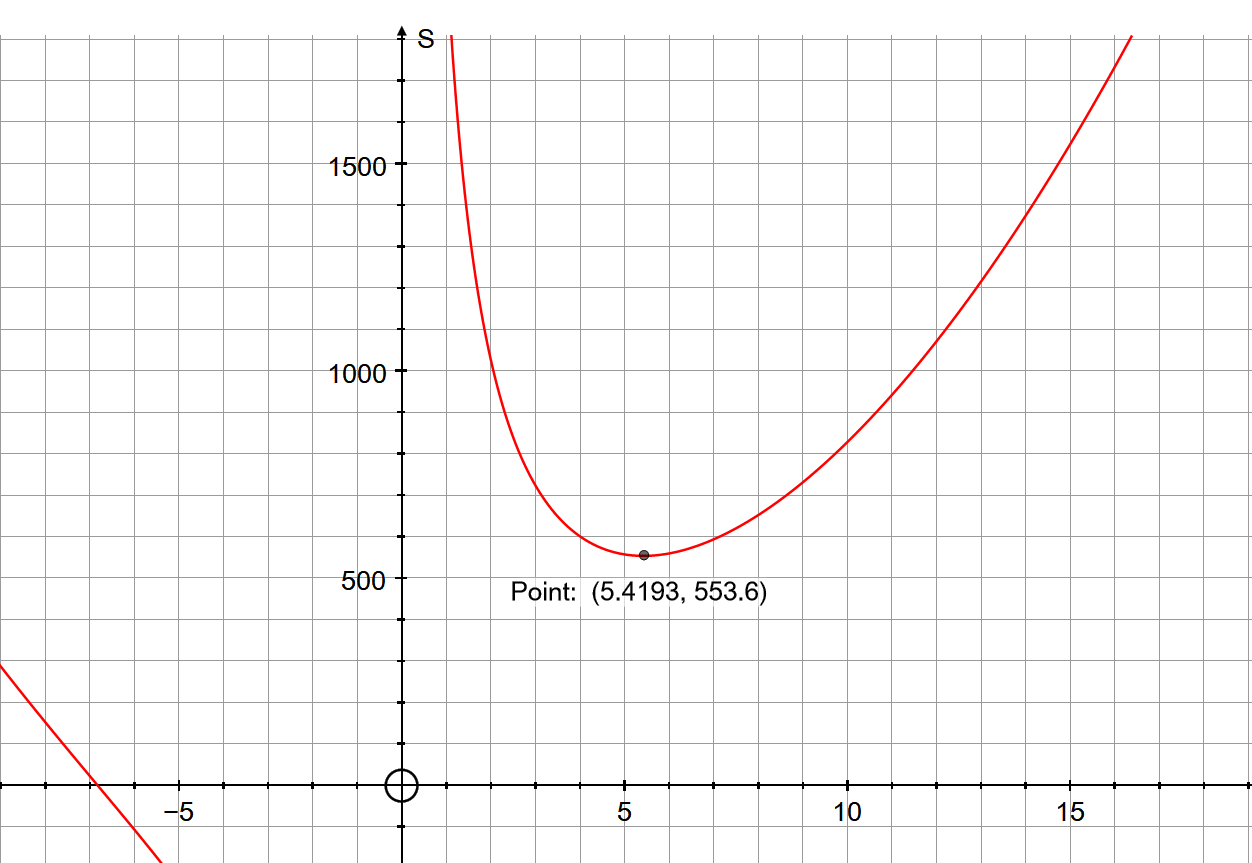A cam is to be made to hold a liter of oil. find the radius of the can that will minimize the cost of the metal to make the can.?
1 Answer
Explanation:
The surface area of a right cylinder is given by:
Where
The volume of a cylinder is given by:
We are seeking:
In our surface area equation we have two variables,
We need a volume of 1 litre(
Substituting this result in:
We now differentiate this in respect of
This derivative will allow us to find any stationary points on
Equating to zero:
We don't need to be concerned with complex or negative roots.
We now need to test whether this is a minimum or maximum point. We do this using the second derivative. If:
Plugging in
This is positive, so
This give a value of
So the can needs to have:
Graph of


